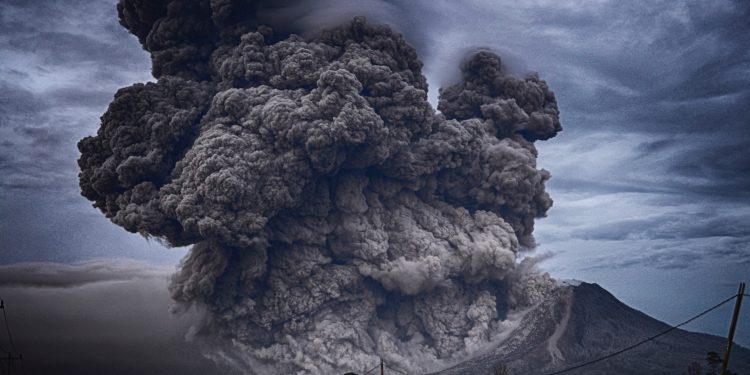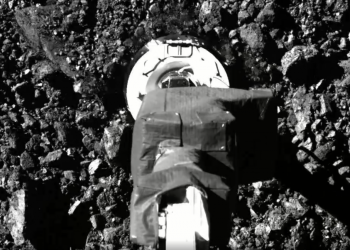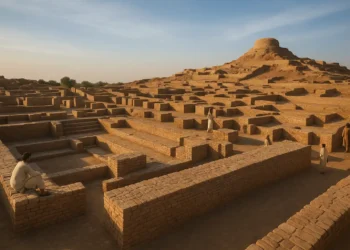After the COVID-19 pandemic and the global market crisis, 2020 has been amongst the most potent candidates for the title of the worst year in human history. Nonetheless, not only this is an unreasonable statement and thinking, but it’s also proof of recency bias for most of the supporters of this approach.
The following article intends to present the 10 most ruthless, worst, dangerous, and disastrous years in the entire history of the human world. Although years like 2020 are undoubtedly bad for people who never expected such a global crisis, they are arguably great years compared with the following list. One would need to prove that it is only knowledge of historical events and context, which is the primary purpose of the next topic.
So without further ado, let’s get straight to the Top-10 Worst Years in Human History list. From the worst periods of global temperatures to the most ruthless war events and atrocities. The following list will be a lesson: no matter how hard it gets, it can always get more challenging.
1. 1816: Extended Period of Glaciation
By many, it has been characterized as the year without a summer. For others, it can be the starting point of the extended climate change we are witnessing up until this day. Historians refer to it due to the extended period of glaciation, where the winter snow never melted.
People who lived in 1816 witnessed a drop of 0.4–0.7°C (0.7–1.2°F) in global temperature, resulting from Mount Tambora in Indonesia. It was the largest eruption in 1,300 years. The explosion contributed to no frosts or snowfall in June, while rivers were frozen in August. 1816 continued with crop failure, starvation, famine, and death overall.
2. 1783: The Laki Volcanic Eruption
Since the first year on the list started with the impact of a volcano, although not in chronological order, another eruption has to be considered. Laki is a volcanic fissure in Iceland that erupted violently in 1783. Nonetheless, it wasn’t an insignificant or ordinary eruption. By its end, a year later, it had poured 42 billion tons of hydrofluoric acid, sulfur dioxide, and basalt lava.
What was the immediate impact of all these chemicals? The extreme toll of climate change and the most catastrophic famine for Iceland. 1/4 of the population died. In the meantime, the eruption impacted the African and Indian monsoon seasons, led to famines in Egypt and Europe, and resulted in thousands of deaths.
3. 536 AD: Icelandic Volcano & Justinian Plague
Once again, the year of 536 AD was begun by an Icelandic volcano eruption. When this event dimmed the sun for 18 months straight, according to accounts, one can easily understand why it’s one of the worst periods in history to be alive.
Humans witnessed a 1.5°C to 2.5°C drop in summer temperatures. It was the beginning of what’s considered the coldest decade in 2000 years. The crop failed in Ireland, Scandinavia, Mesopotamia, and China, which led to widespread starvation. Even if that was more than enough, the world had to undergo another volcanic eruption years later, which dropped the European temperature again by 1.4°C-2.7°C.
In the meantime, the people of the Mediterranean also had to battle the Justinian bubonic plague, speeding the collapse of the eastern Roman Empire before, during, and after the years of 543. 40% – 55% of the population perished.
Read more about the horrible year of 536 AD on this link.
4. 73,000 BC: Worst Year of the Toba Catastrophe
We are talking about one of the biggest ‘what ifs’ in the history of humanity with this one. What if it had occurred today? Or, what if people could write about this horrible year? We continue with the disasters, but with the Toba Catastrophe, we take it one step further.
The Toba Catastrophe is a supervolcanic eruption that occurred 75,000 years ago in Indonesia. Scientists have made the utmost effort to understand the gravity of this situation. The human population surviving was reduced to as little as 3,000-10,000 people. Humanity nearly went extinct, and the volcanic winter cooled the planet by an estimated 3–5°C (5.4–9°F).
Although the debate is still on and arguments from both sides are considered controversial, if the Toba Catastrophe was that bad, it might have been the worst year the human species has ever witnessed, hands down.
5. 1316: Famine Turns People to Cannibals
We are moving away from natural disasters into the years when famines played a massively dangerous role. For that reason, 1316 has to always be considered for the title of the worst year. For the previous events, the main focus was on the temperature changes. Now, we believe the impact of these changes at the beginning of the 14th century, focusing on the harvests and the famines.
In 1316, when it rained almost constantly through the summer and the autumn of the previous years, the entire harvests failed thrice in one year. They led to one of the most extreme forms of starvation. More specifically, people turned to cannibalism while families would even abandon their children to look after and provide only for themselves.
Numbers that explain the impact in a better way? 15%-25% of the world’s population perished and died within one year.
6. 1347: Bubonic Plague or “The Black Death”
During the end of the 13th century, the Eurocentric regions had found multiple ways to connect with the most prominent financial centers of the Asian world. In the middle of the century, that proved to be a curse since the peak of the Bubonic Plague in Europe started when Asian ships reached the Sicilian port of Messina.
Specifically, the nature of the European poly-centric trading system was the catalyst for the fast-paced development until then. Still, after the infection, the Bubonic Plague was considered the worst pandemic ever struck Europe up until that point. In fact, 60% of the European population died. Additionally, 25 to 50 million people were wiped out from the wider Eurasian region.
The way of life was disturbed for years and even decades, while the Black Death never really ended.
7. 1520: Colonial Brutality & Smallpox Disaster
When the French, British, and Portuguese introduced the system of the Columbian exchange to the newly colonized areas of the Americas, both sides thought that they would benefit from the system. The colonizers soon imposed their own measures while the colonized were directly affected so severely that they didn’t even have time to react.
In 1520, the Europeans were at a point where they had already been through the epidemics, and they had developed immunity. Their primary goal was to colonize the New World. The colonized didn’t know what was the epidemic that hit them from the Europeans, the Smallpox, let alone being ready to battle it. The Spanish had sent Cortés to lead an expedition to the mainland.
Smallpox spread to the Americans from the Spanish troupes, where the region was home to the Aztec civilization and the empire of 16 million people. Around 10-14 million Aztecs were believed to have died in a year. The Americas were never the same, and the entire world knew, was shocked and harmed by the epidemic and the turn of events.
8. 1919: Spanish Deadly Flu & Worst Year of WWI
1919 might be one of the only years when a naturally disastrous event such as an epidemic combined with a human catastrophe such as the First Global War. It was the end of the war around 1919. However, the millions who died from the Spanish flu didn’t have immunity after the war, which made it the worst year of the decade.
The Russians were also undergoing their own civil conflict. The Treaty of Versailles split the entire European region into two different rivals. The map of the Middle East after the conflict was re-drawn, and millions continued to die from the Spanish flu. Overall, the Influenza pandemic, alongside World War I, killed somewhere between 20 and 40 million people.
9. 1943: Worst Inhumane Year in Human History
After speaking for a while about the natural disasters and the human responses to pandemics, wars, and conflicts, it’s time that we hold humans accountable for 1943. This might have been the worst year possible to be part of the human species since everyone showed their brutal and inhumane antics.
Historians state that the Holocaust reached a climax with the Nazi genocide machine in full flow. The Germans deported nearly 1.2 million Jews to the concentration camps from Nazi-occupied lands. They died within the first half of 1943. In the meantime, the Bengal famine was going on, and 3 million died of starvation in India after the British increased the food they were taking from the colonies.
Racial violence was also immense in the United States, and inhumane treatment of African-Americans was the reality. The Second Global War was also taking place, and the battle was at its peak. The best way to describe how bad this year was is by showing that regardless of the area, one couldn’t live in peace.
10. 1945: Atomic Bombs & Holocaust Worst Year
World War II is arguably a leading candidate for the darkest page in the human history book. Nevertheless, we considered the year 1943 before for the atrocities and inhumane acts of WWII, but this one is solely focusing on the deadliest global conflict in history.
Therefore, 1945 was the worst year that the U.S. dropped two atomic bombs on Japan, which resulted in more than 400,000 casualties and deaths. During the same year, the city of Tokyo saw 2,000 tons of incendiary bombs fall, resulting in 100,000 deaths of civilians. Additionally, the mass extermination of Jews through the Holocaust resulted in the death of approximately 6 million European Jews.
Finally, the entire war reduced the population by 3%. Accordingly, the estimated death toll was between 70 and 85 million people. Hence, although the list isn’t in order, one could easily understand why people considered 1945 a top candidate for the worst year to be alive in human history.
References
Gibbons, Ann (November 15, 2018). “Why 536 was ‘the worst year to be alive”. Science. AAAS. Retrieved November 16, 2018.
Walsh, Bryan. “Despite the coronavirus pandemic, 2020 wasn’t the worst year ever — by a long shot”. Axios
Ciaccia, Chris (January 21, 2020). “Vikings may have predicted climate change on ancient stone carving”. Fox News – via New York Post.
Pike, David Wingate. Spaniards in the Holocaust: Mauthausen, the horror on the Danube; Editorial: Routledge Chapman & Hall ISBN 978-0-415-22780-3. London, 2000
The Holocaust Chronicle, Publications International Ltd., p. 108.
Shulman, William L. A State of Terror: Germany 1933–1939. Bayside, New York: Holocaust Resource Center and Archives.











